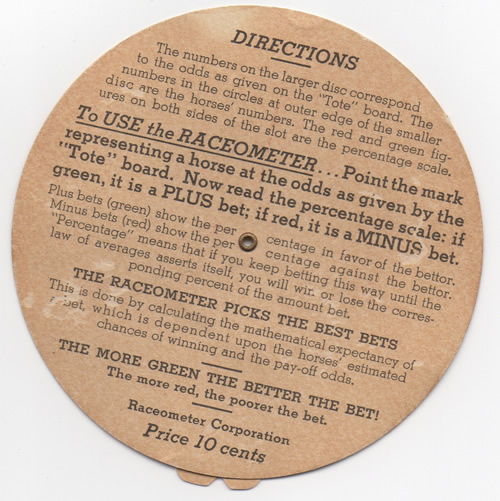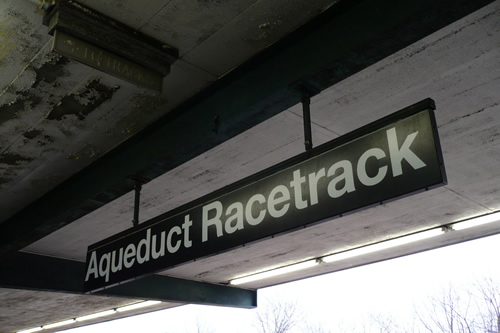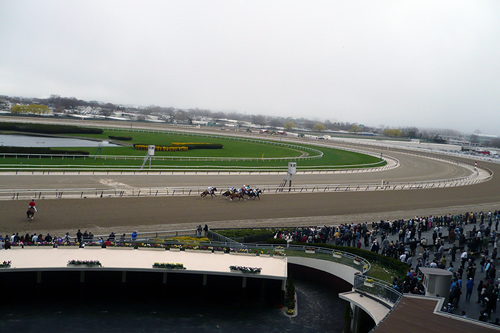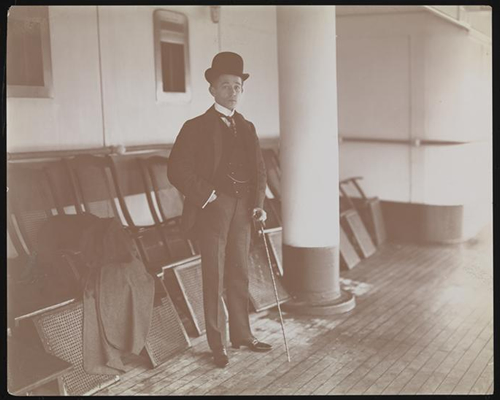Tools of the Trade
Bill Christine’s search for a Kelco put me in mind of my favorite piece of handicapping ephemera, a volvelle for assessing value called the Raceometer:

“The more green the better the bet!” Handy, but at 10 cents a race, pricey.

I’ve been on the lookout for more Raceometers, but all I’ve found so far is a similarly named wheel chart, the Race-o’Meter (note the odd apostrophe), produced by the Southern California Research Company in 1948:

Unlike the Raceometer, a tool for betting, the Race-o’Meter considers eight factors to create individual horse ratings. “Be sure you have a racing form before you when use you the Race-o’Meter,” advises the instructions:

It’s science! Beginning in the 1930s and continuing into the 1970s, “scientific” and “scientifically” were favored adjectives of marketers hawking handicapping systems and methods. In 1933, as defined in “Systology: The Science of Wagering Upon Horse Races,” a compendium of eight chart-heavy betting systems, “scientific” meant the complete eradication of individual judgment. “By the use of ‘Systology,’ the human equation is removed from wagering,” wrote the authors. “It leaves nothing to the imagination.” (How dull.) In 1961, “Science in Betting” assured its readers that it would tout no “miraculous betting-system,” instead, it would teach bettors how to use “scientifically collected” data, “which if applied intelligently can work consistently and accurately.” Just like the Race-o’Meter claimed, and most likely, the Kelco.
A Moment
… for the crumbling, charmless Aqueduct Racetrack subway stop, set to close on Saturday in advance of renovation for anticipated casino patrons.

The old station won’t be missed, but I get a real pang looking at pictures of the demolished outdoor grandstand seating and thinking about the loss of the unobstructed view afforded by the third floor seats overlooking the finish line.

The field for the 2010 Wood heading into the clubhouse turn.
4/8/11 Addendum: Week-by-week photos of the construction work at Aqueduct by Brooklyn Backstretch. Stunning, how much demolition is involved.
A Dapper Man

Tod Sloan, “great jockey, famed rounder, spender, one-time friend of millionaires and occasional toast of royalty,” on his return from Europe, 1898. The portrait is part of the Museum of the City of New York’s photography collection, much of which was recently published online. A quick search turns up approximately 150 photos of New York racing — including Sheepshead and Belmont racetracks — from the late 19th and early 20th century (via Kottke).
Copyright © 2000-2023 by Jessica Chapel. All rights reserved.